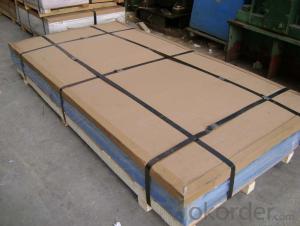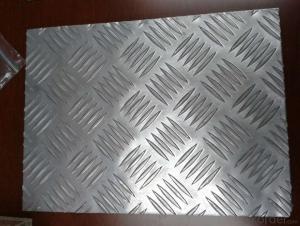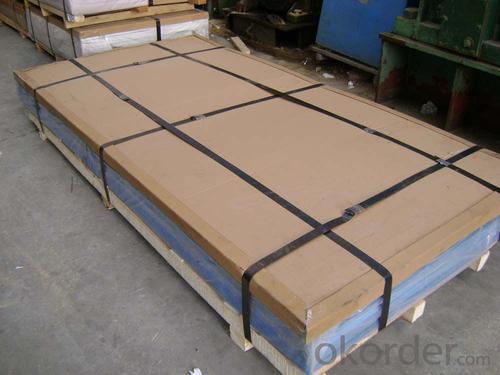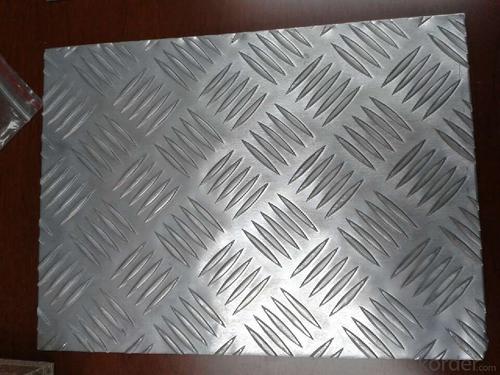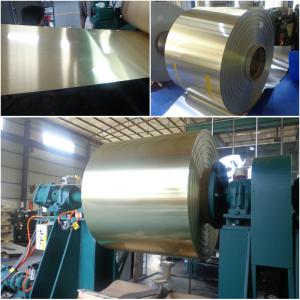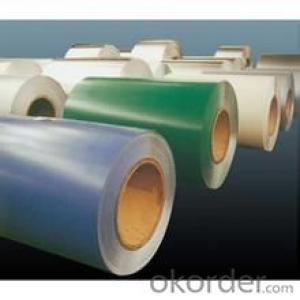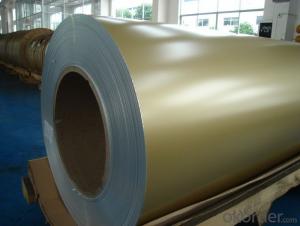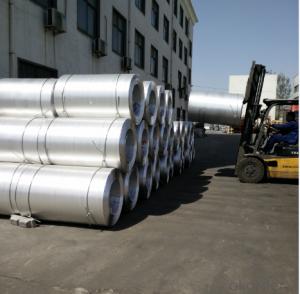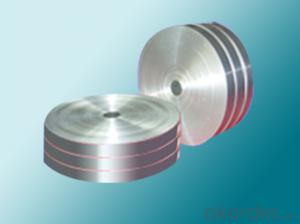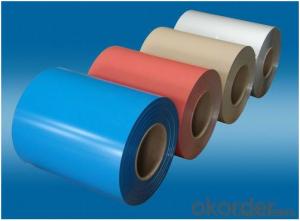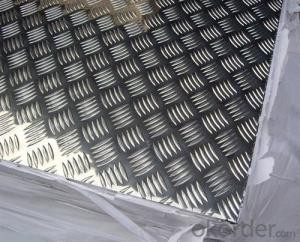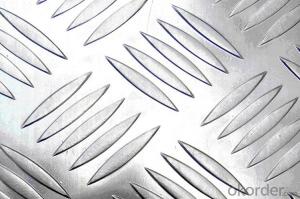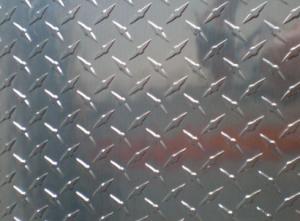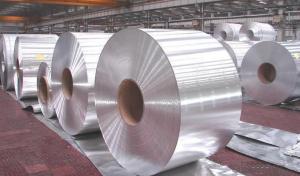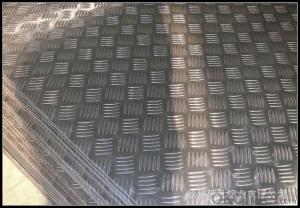Colorful Coated Aluminum Coil - Aluminum Treat 5 Bar Plate 1100 H14, 35mm
- Loading Port:
- Shanghai
- Payment Terms:
- TT OR LC
- Min Order Qty:
- 2 m.t.
- Supply Capability:
- 10000 m.t./month
OKorder Service Pledge
OKorder Financial Service
You Might Also Like
1.Structure of Aluminum Treat 5 BAR Plate 1100 H14, 35MM :
Aluminum Treat 5 BAR Plate 1100 H14, 35MM is widely used for decorative purposes in construction, packing and appliance. Aluminum Treat 5 BAR Plate 1100 H14, 35MM is also very commonly used for anti-shippery purposes in vehicles and pulic places.
2.Main Features of the Aluminum Treat 5 BAR Plate 1100 H14, 35MM :
• Beautiful parten
• Good anti-slippery quanlity
• High manufacturing accuracy
• High strength of extension and yield
• Well packaged
• No marks, no scratch, no excessive oil
3. Aluminum Treat 5 BAR Plate 1100 H14, 35MM
Alloy: 1050, 1060, 1070, 1100, 3003, 3004, 3005, 3105, 5052, 5083, 5754, 8011, 8006
Temper: H14, H16, H18, H22, H24, H26, H32, O/F
Thickness: 0.2mm-20mm
Width: 10mm-1500mm
4. Aluminum Treat 5 BAR Plate 1100 H14, 35MM
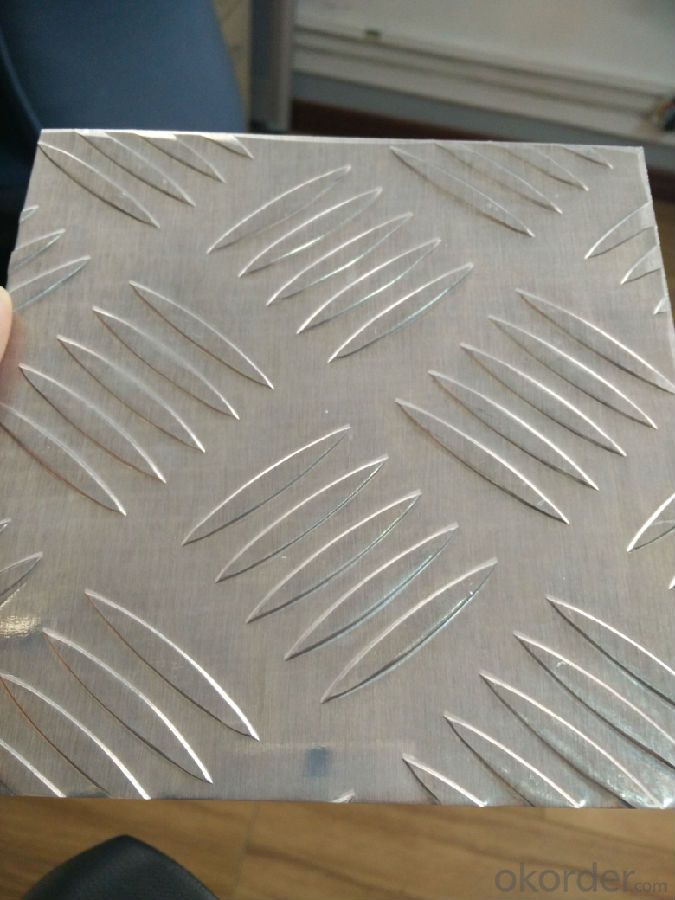
Packing
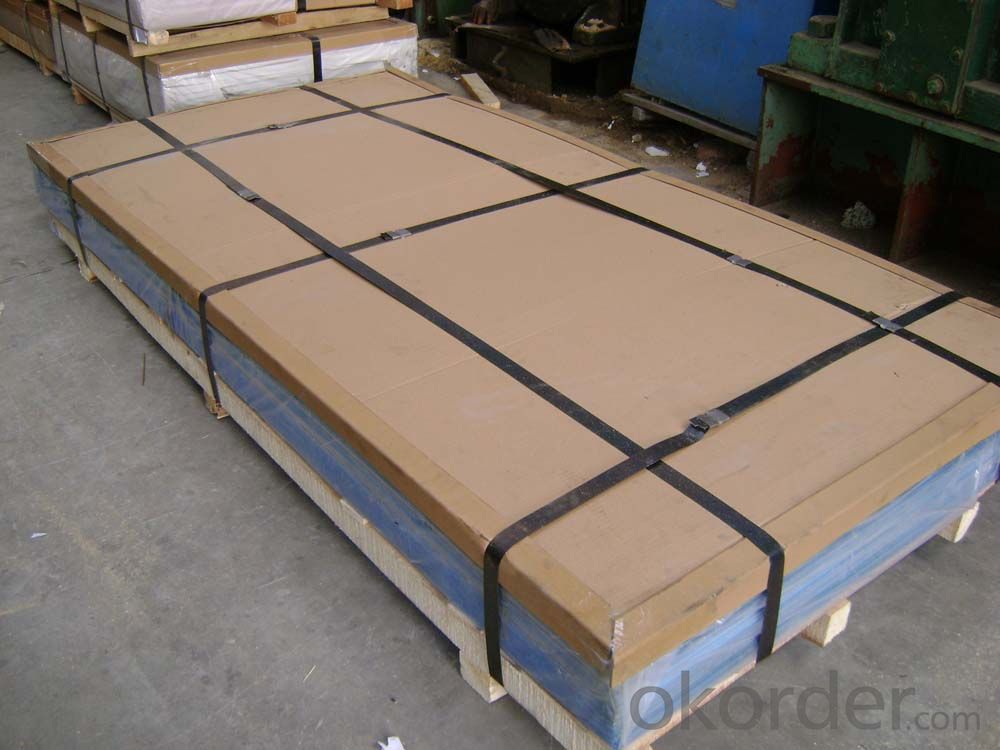
5.FAQ
We have organized several common questions for our clients,may help you sincerely:
① How about your company?
A world class manufacturer & supplier of aluminum coil and alloy blanks. Aluminum production base is comprised of 18 aluminum annealers, 10 coil and foil mills, 4 continuous production lines, 2 hot rolling production line and 3 prepainted lines.
Export 5000 tons per month to Asia, America and Middle East. Always do the best for our clients.
②Can you guarantee the quality of the products?
We are responsible for the quality of materials to get a long-term cooperation with clients in a reasonable period of time and we are glad to arrange and coordinate any third party inspection for you.
③What is the delivery time after purchase?
35 day after receiving client’s deposit or correct LC
- Q: How do you store aluminum coils to prevent damage?
- To store aluminum coils and prevent damage, there are several important steps you can follow. First, it is crucial to ensure that the storage area is clean, dry, and free from any moisture or humidity. This is because moisture can lead to corrosion and damage the aluminum coils over time. Second, you should store the coils in an upright position, preferably on pallets or racks, to prevent any bending or warping. By keeping them upright, you minimize the risk of coil deformation and maintain their shape for future use. Furthermore, it is advisable to cover the coils with a protective material such as plastic or tarp to shield them from dust, dirt, and other contaminants. This protective layer will also isolate the coils from any potential chemical exposure that could accelerate corrosion. Additionally, it is essential to handle the coils with care during storage, as rough handling or dropping them can lead to dents or scratches. To prevent any physical damage, use appropriate lifting equipment, such as forklifts or cranes, when moving or stacking the coils. Lastly, it is recommended to periodically inspect the coils during storage to ensure there are no signs of damage or corrosion. Regular visual checks will allow you to identify any issues early on and take necessary steps to prevent further damage. By following these storage practices, you can effectively prevent damage to aluminum coils, ensuring their longevity and preserving their quality for future use.
- Q: What specific tools are required for handling and working with aluminum coils?
- <p>Working with aluminum coils typically requires specialized tools to ensure safety and efficiency. These include cutting tools like metal snips or shears designed for aluminum, which are crucial for cutting the coils without damaging them. Additionally, a coil carrier or uncoiler is necessary for handling and unrolling the coils without causing injury or deformation. Protective gear such as gloves and safety glasses is also essential to prevent injuries from sharp edges or debris. For more precise work, a metal straightener or leveling machine may be needed to correct any warping in the aluminum coils.</p>
- Q: How are aluminum coils cut to size?
- Aluminum coils are typically cut to size using specialized coil slitting machines. These machines have rotating circular blades that make precise cuts along the length of the coil. The coil is fed through the machine, and the blades cut the aluminum into the desired width. The cut pieces are then collected and further processed or used for various applications.
- Q: What are the different packaging options for aluminum coils?
- There are various packaging options available for aluminum coils to ensure their safety and convenience during transportation and storage. Some common packaging options include: 1. Wooden Crates: Aluminum coils are often packaged in wooden crates, which provide excellent protection against impacts and ensure the coils remain intact during transit. The crates are typically reinforced with steel bands for added strength and stability. 2. Cardboard Boxes: Smaller aluminum coils or coils intended for retail purposes are often packaged in cardboard boxes. These boxes are lightweight, cost-effective, and provide moderate protection against minor impacts. 3. Plastic Wrapping: Aluminum coils can also be wrapped in plastic film, which helps protect them from moisture, dust, and scratches. This packaging option is commonly used for coils that are transported in bulk or in situations where additional packaging is not required. 4. Metal or Composite Tubes: In some cases, aluminum coils are packaged in metal or composite tubes. These tubes are sturdy and provide excellent protection against external forces. They are often used for coils with large diameters or longer lengths. 5. Customized Packaging: Depending on the specific requirements of the customer or industry, customized packaging options can be designed. This may include the use of foam or cushioning materials to provide additional protection, or the incorporation of specialized features such as moisture-resistant barriers. It is important to choose packaging options that best suit the specific needs of the aluminum coils, considering factors such as coil size, weight, transportation conditions, and storage requirements.
- Q: How are aluminum coils used in the production of automotive heat shields?
- The production of automotive heat shields heavily relies on aluminum coils. These shields are vital in safeguarding different parts from excessive heat produced by the engine, exhaust system, or other heat sources. Typically, these shields are made from lightweight and heat-resistant materials, making aluminum coils a popular choice because of their exceptional thermal conductivity, durability, and corrosion resistance. To manufacture the heat shields, aluminum coils undergo a process of unwinding and cutting into sheets of the desired size. These sheets are then shaped using various techniques like stamping, bending, or deep drawing. Aluminum's malleability makes it perfect for creating heat shields with intricate geometries, ensuring a precise fit in the vehicle. Once the desired shape is achieved, the aluminum sheets are often treated with a surface coating to improve heat resistance and prevent corrosion. This coating can be in the form of a ceramic or metallic layer, serving as an additional barrier against extreme temperatures. Furthermore, the formed and coated aluminum sheets are usually combined with other insulating materials, such as ceramic fibers or laminated films, to further enhance the heat shield's performance. These additional layers aid in reducing heat transfer by reflecting or absorbing the heat energy, thus protecting surrounding components from potential damage or overheating. Finally, the assembled heat shields are affixed in specific locations within the vehicle, such as around the exhaust system or near the engine, using fasteners or adhesive techniques. The lightweight nature of aluminum coils ensures that the heat shields do not add unnecessary weight to the vehicle, which is crucial for maintaining fuel efficiency and overall performance. In conclusion, aluminum coils are extensively employed in the production of automotive heat shields due to their excellent thermal conductivity, durability, and corrosion resistance. Their ease of shaping and molding, coupled with surface coatings and additional insulating layers, guarantee effective heat insulation and protection for various vehicle components.
- Q: Are aluminum coils suitable for electrical conductors?
- Yes, aluminum coils are suitable for electrical conductors. Aluminum is a good conductor of electricity, second only to copper in terms of conductivity. It is widely used in various electrical applications, including power transmission lines, wiring, and electrical coils. Aluminum coils offer excellent electrical conductivity while also being lightweight, cost-effective, and resistant to corrosion.
- Q: What are the different surface treatment options available for aluminum coils?
- Aluminum coils have various surface treatment options available, each with its own purpose and unique advantages. Some commonly used options include: 1. Anodizing: Through an electrochemical process, anodizing creates a protective oxide layer on the aluminum coil's surface. This treatment enhances corrosion resistance, improves durability, and allows for coloring options. 2. Painting: By applying different types of paints like polyester, epoxy, or polyurethane, the aluminum coil can have an aesthetic finish while being protected against corrosion. The choice of paint depends on the desired appearance and level of protection needed. 3. Powder Coating: This method involves applying a dry powder to the aluminum coil's surface, which is then cured with heat. It results in a durable and attractive finish that is resistant to chipping, scratching, and fading. Powder coating offers a wide range of color options and can be used in various applications. 4. Brushing: Brushing the aluminum coil creates a brushed or satin finish with visible linear patterns. It is commonly used for decorative purposes, giving the coil a unique and visually appealing appearance. 5. Laminating: Laminating involves bonding a protective layer, such as a PVC film or polyester film, onto the aluminum coil's surface. This treatment provides additional protection against scratches, abrasion, and UV radiation, while also offering customization options. 6. Chemical Conversion Coating: Also known as chromate conversion coating, this method applies a thin layer of chromate onto the aluminum coil's surface. It enhances corrosion resistance, improves paint adhesion, and provides a base for subsequent painting or powder coating. Choosing the appropriate surface treatment option for aluminum coils depends on specific requirements like durability, corrosion resistance, aesthetics, and cost-effectiveness. Seeking advice from experts in the field can help determine the most suitable treatment option.
- Q: What are the rules and regulations concerning the disposal of old aluminum coils?
- <p>Yes, there are regulations on the disposal of old aluminum coils. These regulations vary by country and region, but generally, they aim to prevent environmental pollution and promote recycling. In the United States, for example, the Environmental Protection Agency (EPA) sets guidelines for recycling and disposing of scrap metal, including aluminum. Businesses and individuals are often required to recycle aluminum coils rather than sending them to landfills. Proper disposal may involve sorting, cleaning, and sending the coils to recycling facilities that can process and reuse the material. Violations of these regulations can result in fines and penalties. It's important to check local and national regulations for specific requirements.</p>
- Q: What is the cost-effectiveness of using aluminum coils compared to other materials?
- The cost-effectiveness of using aluminum coils compared to other materials depends on various factors such as the application, lifespan, and initial cost. Aluminum coils are widely used in various industries including construction, automotive, and HVAC due to their lightweight, corrosion resistance, and excellent thermal conductivity. These qualities make them a cost-effective choice in many applications. When compared to other materials like copper or steel, aluminum coils are generally more affordable. The initial cost of aluminum coils is typically lower, making them a cost-effective option for those working within a budget. Moreover, aluminum coils have a longer lifespan compared to some other materials. They are resistant to corrosion, which means they can withstand harsh environments, reducing the need for frequent replacements. This longevity can result in long-term cost savings. Additionally, aluminum is highly recyclable, making it environmentally friendly. The recycling process for aluminum requires significantly less energy compared to mining and refining new materials. This aspect further contributes to the cost-effectiveness of using aluminum coils. However, it is important to note that in certain applications, other materials may be more suitable. For example, copper coils are known for their superior heat transfer properties, making them ideal for specific HVAC systems where efficiency is crucial. In conclusion, the cost-effectiveness of using aluminum coils compared to other materials depends on the specific requirements of the application. While aluminum coils generally offer affordability, longevity, and recyclability, it is essential to consider factors such as heat transfer, system efficiency, and initial investment to determine the most cost-effective option for a particular project.
- Q: Are there any safety considerations when handling aluminum coils?
- Several safety considerations must be taken into account when dealing with aluminum coils. To begin with, the weight and unwieldiness of these coils necessitate the use of proper lifting techniques or mechanical lifting equipment to avoid strain or injury. Furthermore, it is crucial to exercise caution and wear protective gloves when handling aluminum coils due to their sharp edges or corners, in order to prevent cuts or punctures. Moreover, it is essential to ensure that coils are grounded correctly to prevent electrical shock, as aluminum has the ability to conduct electricity. In addition, maintaining a clean and dry working area is of utmost importance, as aluminum coils can become extremely slippery when wet or oily, thus preventing slips, trips, and falls. Lastly, to prevent any chemical reactions or hazardous situations, it is necessary to handle and store coils separately from incompatible substances, as aluminum can react with certain chemicals. In conclusion, adhering to proper handling procedures, using appropriate personal protective equipment, and remaining vigilant of potential hazards significantly reduces the risk of accidents and injuries when dealing with aluminum coils.
Send your message to us
Colorful Coated Aluminum Coil - Aluminum Treat 5 Bar Plate 1100 H14, 35mm
- Loading Port:
- Shanghai
- Payment Terms:
- TT OR LC
- Min Order Qty:
- 2 m.t.
- Supply Capability:
- 10000 m.t./month
OKorder Service Pledge
OKorder Financial Service
Similar products
Hot products
Hot Searches
Related keywords
